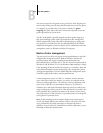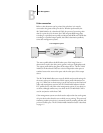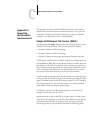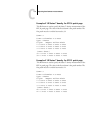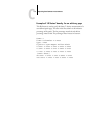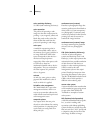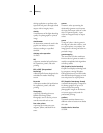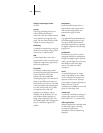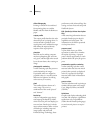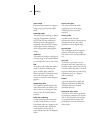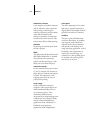
G-3 Glossary
editing application to perform color
separation and pass it through to final
output with its integrity intact.
density
A measurement of the light-absorbing
quality of a photographic or printed
image.
densitometer
An instrument commonly used in the
graphic arts industry to measure
density according to a specified
standard.
desktop color separation
See DCS.
DIC
A Japanese standard of specifications
for separations, proofs, and color
printing.
EPS or EPSF (Encapsulated
PostScript)
A PostScript file format designed to be
embedded in another PostScript
stream.
Euroscale
A European standard of specifications
for separations, proofs, and color
printing.
flexography
A printing technology that uses
flexible raised-image plates.
Flexography can be used to print on
non-flat materials such as cans.
four-color printer
A printing device that uses cyan,
magenta, yellow, and black ink or
toner.
gamma
A numeric value representing the
relationship (gamma curve) between
the input and output values of a color
device. If gamma equals 1, input
values are mapped exactly to output
values.
gamut
A range of colors. A device gamut is
the range of colors that a device, such
as a copier/printer, can produce. An
image gamut is the range of colors in a
particular image.
gamut mapping
The conversion of color coordinates
from one device’s gamut to another—
usually accomplished with algorithms
or look-up tables.
GDI (Graphics Device Interface)
Graphics and display technology used
by computers running Windows.
GDI applications rely on GDI (rather
than the PostScript language) to send
text and pictures to copier/printers.
GIF (Graphics Interchange Format)
A standard developed by CompuServe
for bitmap graphics of up to 256
colors and used for posting
photographic images on the Internet
or intranet pages; rarely used for
professional printing.
gradient
A smooth transition between two
different colors or between two shades
of a color.
Graphics Device Interface
See GDI.



